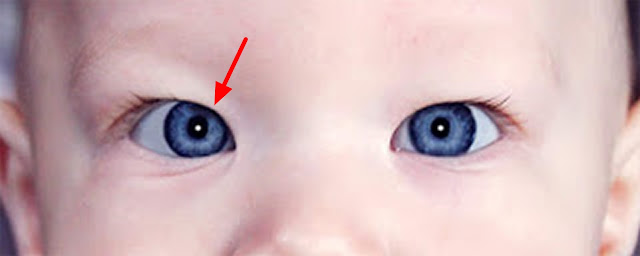STRABISMUS CAUSES AND ITS TREATMENT
Normally, the image falls on the
retina of both eyes, and then on the optic nerve - in the occipital region of
the cerebral cortex. There, the images obtained from the right and left eyes
separately, the visual analyzer combines into one "picture", giving
it depth and a sense of orientation in space and distance. This is how
binocular vision is formed. The
Prevalence
Strabismus in pediatric
ophthalmic practice is a common visual pathology and occurs in an average of 2%
of cases, and congenital strabismus is born in about 1 in 400 children. In the
future, these values increase, and these incidence rates in preschool
children increase to 10%.
Although the pathology is easily
diagnosed, it is possible to get rid of it only by seeking medical help.
Causes and risk factors
The immediate cause of strabismus
is a violation of the eye muscles, this condition can lead to:
·
congenital anomalies in the development of the
visual system,
·
paralysis, paresis,
·
severe psychotrauma,
·
injuries during childbirth,
·
injuries to the eyes and muscles in old age,
·
diseases of the central nervous system,
Significant reduction in visual
acuity of one eye (eg, the formation of ailments, cataracts, etc.),
infectious diseases that
contribute to complications of the nervous system and paralysis of the eye
muscles,
Strabismus up to 6 months is
considered a physiological condition in a child, so that this condition is not
fixed in the future, it is necessary to create appropriate conditions for the
development of visual organs in the child:
In adults, strabismus can be
caused by diseases that lead to impaired vision or disrupt the muscles that are
responsible for eye mobility. For example, diabetes, myasthenia gravis,
traumatic brain injury, brain tumors, strokes. Strabismus can also occur after
any surgery in the orbit, if during such an intervention there was damage to
the eye muscles.
Classification
Strabismus (strabismus) is
congenital and acquired, the nature of the movement of the pupils are:
Horizontal - there is a deviation
of the visual axis in the horizontal direction. This is convergent and
divergent strabismus.
Vertical - the visual axis
deviates upwards (hypertropia) or downwards (hypotropia).
Depending on whether one or both
eyes are involved, there are monocular strabismus (mows 1 eye) and alternate
(alternately mows one or the other eye).
In the case of monocular
strabismus, the brain adapts to read information from one eye, and the other
simply excludes from work
In the alternating type of
disease, the brain involves both eyes, so even if amblyopia occurs, it is
milder.
Specialists also distinguish
between comorbid and paralytic strabismus. In the first case, the movement of
the eyeballs is in full, and in the second - there is a restriction of the
movement of the eyeball towards the paralyzed muscle.
Symptoms
A clear sign of strabismus is the
deviation of one eye to the side, up or down when trying to focus your gaze on
any object.
Other symptoms that may occur with strabismus:
·
headache,
·
doubling before the eyes,
·
visual fatigue when working with small details.
·
If one eye is switched off, binocular vision
disappears: the person ceases to navigate properly in space.
Diagnosis
The diagnosis of strabismus is
established at the initial ophthalmological examination. To clarify the nature
and cause of the disease, an in-depth examination may be scheduled, which
includes some of the following studies:
·
visual acuity test
·
measurement of fields of vision, intraocular
pressure, corneal thickness,
·
Ultrasound of an eye,
·
fundus examination, etc.
All diagnostics is carried out
with the help of modern equipment in a contactless and patient-friendly way.
The final stage is a second consultation with an ophthalmologist and a
recommendation of an individual treatment plan.
Treatment
Strabismus should be treated as
early as possible so that the disease does not lead to irreversible visual
disturbances, such as amblyopia.
Operations
Surgical treatment in case of
strabismus is resorted to in adults, as well as children, if conservative
methods have proved ineffective. The essence of the operation is the correction
of the position of the oculomotor muscles.
The most common types of such interventions:
·
shortening of a muscle due to excision of its
fragment,
·
muscle lengthening,
·
changing the place of fixation of the oculomotor
muscle to strengthen or, conversely, weaken its effect.
·
An innovative technique is the application of
adjustable sutures, when the doctor applies a suture with a supply of thread,
and after the operation "adjusts" the angle of view that will be
comfortable for the patient.
Conservative therapy
The main tasks of conservative
treatment of strabismus - to eliminate lazy eye syndrome and restore binocular
(stereoscopic) vision.
To include the lazy eye in the
work are special digital glasses, occlusive bandages, classes using special
computer programs and simulators.
Hardware therapy allows you to
restore binocular vision and consolidate the desired position of the oculomotor
muscles. Preventive treatment is carried out 4 times a year until the age of
18-25, when the formation of the visual analyzer is completed.




Comments
Post a Comment